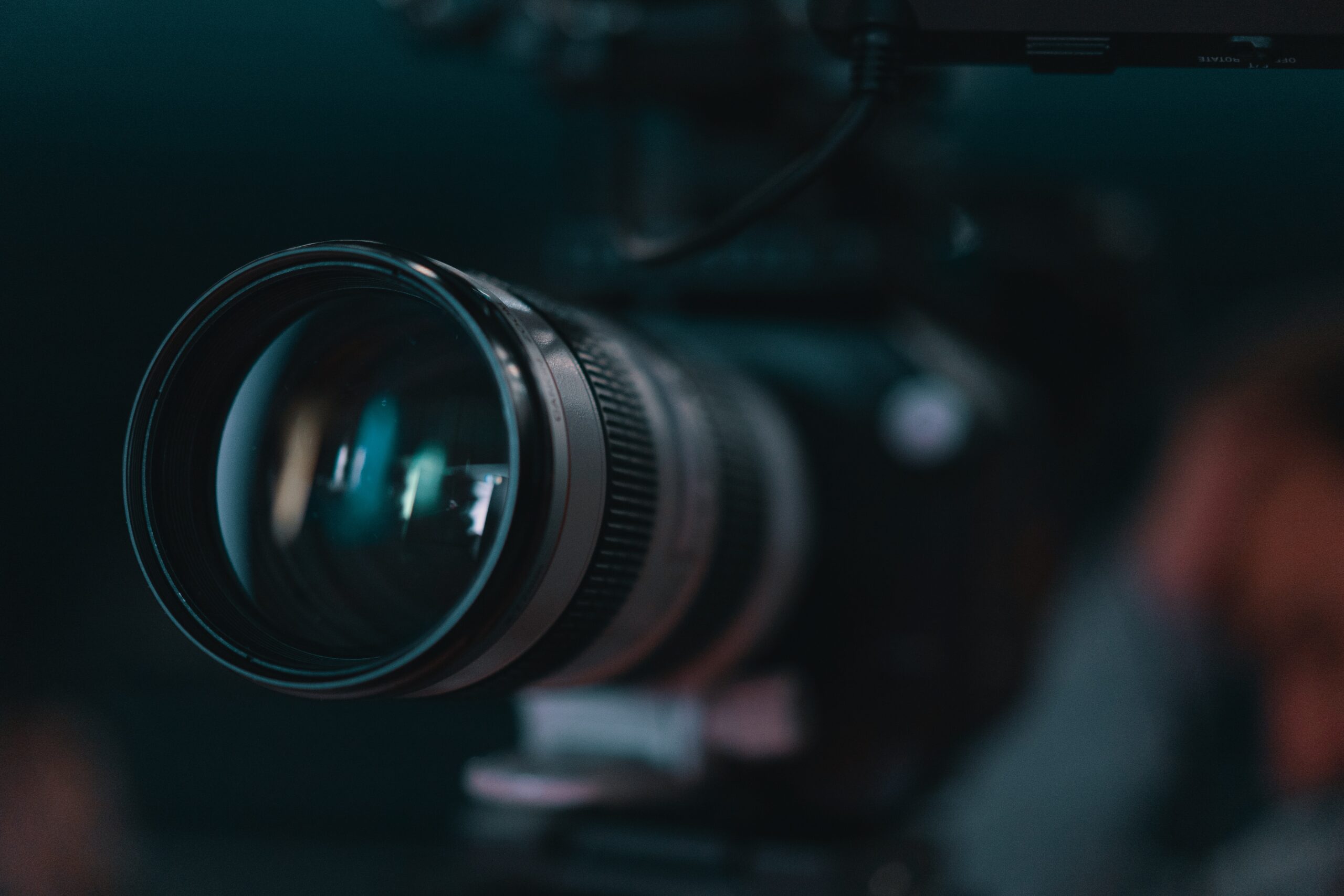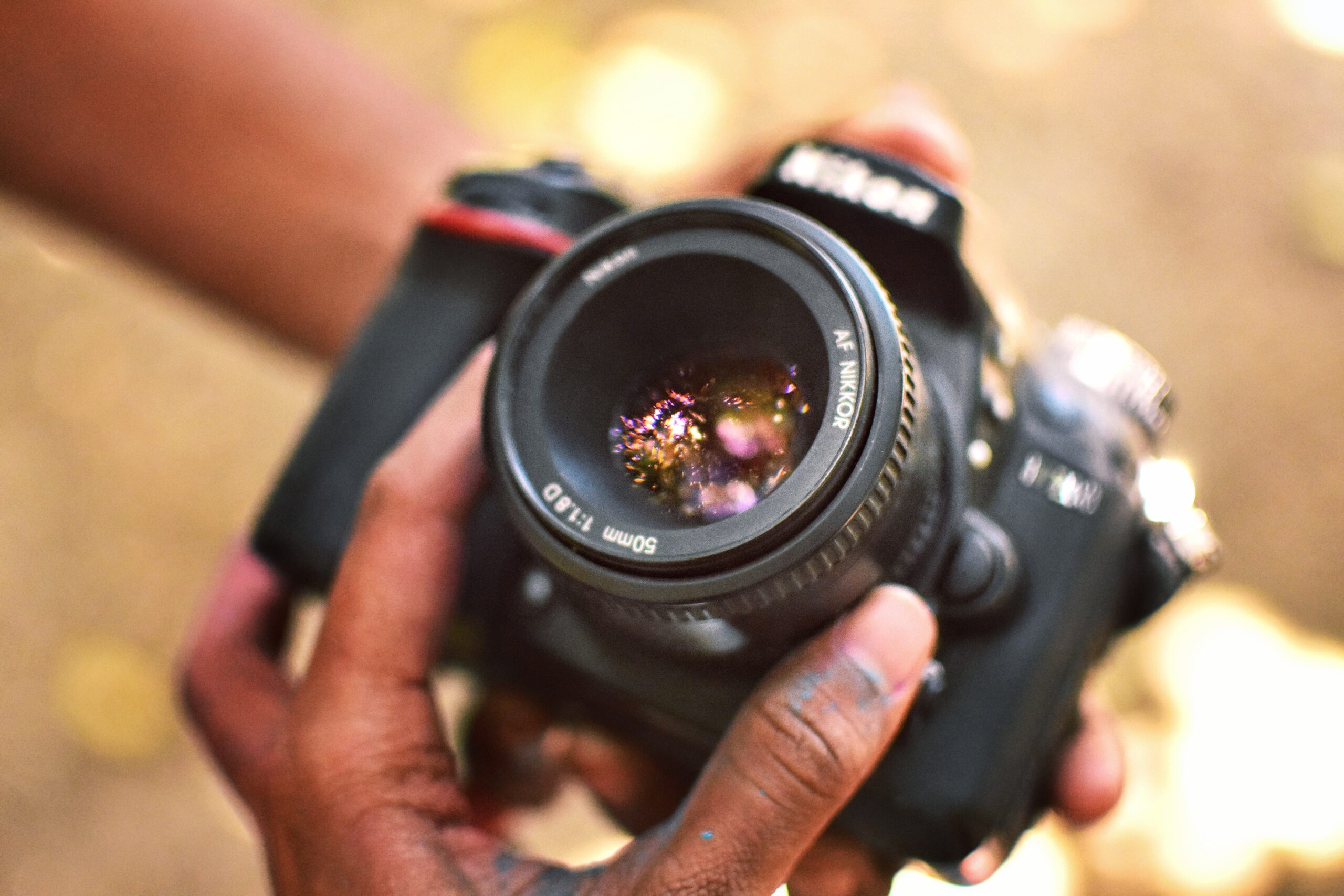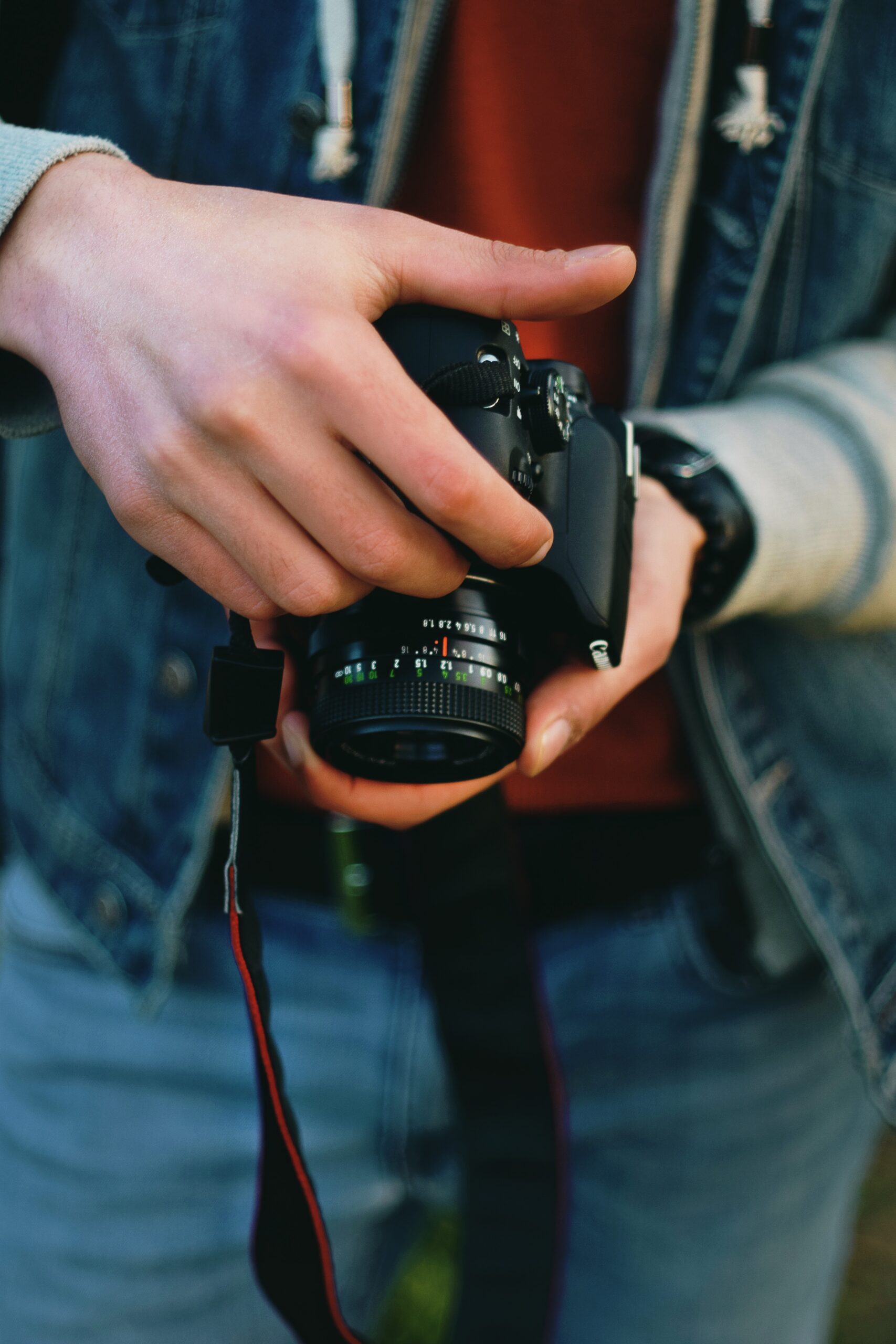Introduction
Macro photography focuses on capturing extremely close-up images of objects or scenes that are typically too small or too far away to be noticed by the naked eye. Nevertheless, mastering this specialized genre presents its own unique set of obstacles to overcome. The challenges of photographing subjects at such a close range can be intimidating, as aspects such as depth of field, lighting, and stability require careful attention at all times. During this investigation, we will examine the challenges that are inherently associated with macro photography and shed light on productive strategies to overcome these obstacles. Aspiring macro photographers can unlock a world of captivating imagery by learning and applying these techniques, which will bring to light the mesmerizing intricacies of the tiny, often unseen aspects of our surroundings.
How Does Macro Photography Work?
- The term “macro photography” refers to the practice of photographing subjects from an extremely close range, which enables the identification of tiny details that may not be visible to the unaided eye of a human being. To achieve this level of magnification, you will need to make use of specialized equipment such as macro lenses or extension tubes, both of which allow the camera to focus sharply at close ranges.
- In macro photography, the depth of field, or the range of sharpness in an image, becomes noticeably shallow. This highlights the necessity of having precise focus as well as control over the aperture settings. In macro photography, the lighting is extremely important because even minute shifts in subject position can cause a loss of sharpness in the final image. As a result, diffusers or additional lighting sources from the outside are frequently used to achieve the desired illumination level.
- Stability is of the utmost importance because even slight vibrations can cause images to become blurry. Tools such as remote shutter releases, mirror lock-up functions, and tripods are frequently used to help photographers overcome this obstacle.
- Macro photographers offer viewers a fresh viewpoint on the often-overlooked beauty that lies within the small-scale realms of our environment by using careful consideration of these elements to reveal a world of captivating intricacies in their photographs.
Common Challenges in Macro Photography
Lighting
- When working at such close distances in macro photography, lighting can become a challenge because shadows and highlights can become overly pronounced. This can potentially obscure details or cause unwanted reflections. In addition, the miniature size of the subject frequently necessitates precise control over the direction, intensity, and quality of the light.
- Macro photographers use a variety of different techniques to help them overcome these challenges. Diffusers, which can take the form of softboxes or reflectors, are employed in photography to diffuse and smooth out the light, thereby mitigating the appearance of harsh shadows and blown-out highlights. Adjustments can be made to either external flashes or continuous light sources to achieve the desired level of illumination. The use of a reflector to bounce light onto the subject is another technique that can help the lighting setup look more natural.
- In addition, the use of natural light is a valuable asset that can be put to excellent use in macro photography. Taking pictures of a subject during the “golden hours” of early morning or late afternoon can provide a light that is soft and diffused, which enhances the details of the subject being photographed. The use of translucent materials or modifiers as a means of filtering and controlling the natural light can also produce pleasing results. This is because translucent materials and modifiers allow more light through.
- Experimentation and adjustment based on the particular subject and conditions are essential for overcoming the lighting challenges that are present in macro photography. This will ultimately lead to the creation of images that are striking and detailed
Narrow Depth of Field
- When taking macro photographs, having a shallow depth of field can be difficult because it causes only a small portion of the subject to be in sharp focus, while the rest of the subject blurs out. This can be a challenge. Because of this, important details may become obscured, which may also lessen the overall impact of the image.
- Photographers resort to a variety of different tactics to triumph over this obstacle. One strategy entails deliberating over where to focus the camera so that the most vital aspects of the subject matter are brought into clear focus. Additionally, the depth of field can be increased by using a smaller aperture, which results in a higher f-number. This enables a greater portion of the subject to be in sharp focus. Nevertheless, to preserve the correct exposure, this might call for some adjustments to be made to the shutter speed or the ISO.
- Focus stacking is another method, in which multiple images captured at various focus distances are combined in post-processing to create a single composite image. The finished photograph will have a greater overall depth of field as a consequence of this.
- In addition, selecting the appropriate composition and angle can assist in drawing attention to the most important aspects of the subject while also making innovative use of the shallow depth of field.
- Photographers can overcome the difficulty of macro photography’s shallow depth of field by deftly applying the aforementioned techniques, which ultimately results in the production of photographs that emphasize the intricate beauty of the subject being photographed.
Dealing with Motion
- Movement is one of the most difficult things to capture in macro photography because even the tiniest amount of motion can cause the image to become blurry. Photographers have a variety of options at their disposal to combat this issue.
- To begin, it is necessary to make use of a sturdy tripod to provide a stable foundation for the camera. This helps to ensure that the subject does not move unintentionally while the photograph is being taken. Additionally, to further lessen the likelihood of introducing motion into an image by pressing the shutter button, it is recommended to make use of a remote shutter release or a timer delay feature built into the camera.
- When photographing subjects that are alive, such as insects or plants that sway in response to the wind, patience is an asset that cannot be undervalued. There is a significant difference that can be made by either waiting for moments of stillness or making use of natural barriers, such as leaves or rocks, to shield the subject from the wind.
- By selecting faster shutter speeds, you can effectively freeze motion, ensuring that even the most minute of movements are captured clearly and distinctly. To preserve the correct exposure, this may necessitate modifying other settings, such as the ISO or the aperture.
- When it is necessary to take pictures of subjects that are moving quickly, employing techniques such as the continuous shooting mode can help increase the likelihood of obtaining a sharp image. Photographers can successfully navigate the challenge of motion in macro photography by employing these strategies, which will result in images that are clear and detailed of the subjects they are photographing.
Focus
- Due to the extremely shallow depth of field at close distances, achieving precise focus in macro photography can be difficult at times. This means that only a small portion of the subject will be in clear focus, while the remainder of it may appear blurry to the viewer.
- Photographers frequently resort to methods such as focus stacking to circumvent this challenge. It is possible to create an image with a greater overall depth of field by taking multiple shots at varying focus distances and then combining them in post-processing. This technique involves taking multiple shots.
- In addition to this, it is essential to select the appropriate focal point. The part of the subject that is the most important or interesting should be carefully selected by the photographer, and they should make sure that it is in clear focus.
- The depth of field can be increased by using a smaller aperture, which results in a higher f-number. This allows for a greater portion of the subject to be in focus. However, to preserve the correct exposure, this may necessitate making adjustments to other settings, such as the shutter speed or the ISO.
- Manual focusing is preferred by some photographers for macro photography because it enables more precise control over the focal point than automatic focusing does. This is something that can be especially helpful when dealing with subjects that are very small or intricate.
- In the end, the only way to become an expert in focus for macro photography is through practice and experimentation. Photographers can improve their skills and take pictures of their subjects that are stunning and detailed by experimenting with a variety of photographic techniques and learning from each shot they take.
Wind
- In macro photography, the presence of wind presents a significant challenge because it has the potential to cause the subject, particularly delicate subjects like flowers or insects, to sway or move unpredictably. Because macro photography has such a shallow depth of field, any movement on the subject’s part can lead to blurry images.
- Photographers have a few options at their disposal to combat the difficulty posed by this obstacle. The use of natural barriers, such as nearby leaves or rocks, to shield the subject from the wind is one strategy that can be implemented. This may be of some assistance in providing protection and steadiness.
- In addition, it can be beneficial to shoot during times of the day when there is less wind, such as early in the morning or late in the afternoon. At these times, the atmosphere has a tendency to be more calm, which lowers the probability that the subject will move.
- When dealing with wind, patience emerges as a crucial quality to possess. A sharp image can be achieved by either waiting for moments of stillness or by gently steadying the subject with a soft tool such as a paintbrush or a piece of card. Both of these techniques can be helpful.
- When used properly, a diffuser or reflector can block the wind and provide an additional layer of protection for the subject. This is especially true in situations where the wind is blowing in the wrong direction.
- Adapting to windy conditions and working around them calls for a combination of careful observation, thorough preparation, and unwavering persistence. Photographers have a better chance of capturing clear images with a high level of detail and sharpness in challenging windy conditions if they employ these techniques.
Dirt and Debris
- In macro photography, the presence of dirt and debris can be problematic because these elements are more likely to be noticed at closer ranges, where they have the potential to obscure the finer details of the subject. This is especially noticeable when photographing small subjects with intricate details or when taking pictures outside in natural settings.
- Photographers have a few options at their disposal to combat the difficulty posed by this obstacle. Before starting to take pictures, you should first make sure to give the subject and the area around it a thorough examination. It is possible to contribute to the creation of a clean and clear image by removing any visible dirt or debris from the subject of the photograph using a soft brush or an air blower.
- It is also essential to keep the lens you are using clean and in good repair if you want to avoid having dust or smudges affect the image quality. Maintaining the lens’s optimal clarity requires both routine cleaning and the use of a lens cap or filter whenever the lens is not being used.
- When taking pictures outside, it is best to position the subject on a flat, stable surface, such as a piece of wood or a rock, to reduce the amount of time they are in contact with dirt or other plant matter. In addition, creating a controlled environment around the subject by employing the use of a small reflector or diffuser can assist in shielding it from dirt and other forms of debris.
- Post-processing allows photographers to further refine an image by removing any remaining visible dirt or imperfections from the photograph using various editing tools.
- When it comes to macro photography, the challenge of dirt can be overcome by paying close attention to detail, carefully preparing the subject, and using post-processing techniques. This will result in images that are clean and detailed of the subject.
Post-processing in Macro Photography
In macro photography, the post-processing stage is an essential step that gives captured images new life. It also allows photographers to refine and enhance the intricate details that are revealed when shooting at close range. At this crucial stage, adjustments are made to aspects such as contrast, color balance, and sharpness. These adjustments are made to ensure that the nuances of the subject are presented in the most compelling form possible.
In addition, the post-processing stage gives photographers the chance to correct any flaws or distractions that may have been accidentally captured during the shoot. Macro photographers can elevate their images to a level of refinement that truly highlights the mesmerizing intricacies of the miniature world by making strategic use of editing software. This method not only provides an outlet for creative expression but is also an essential component in producing macro photographs that are visually arresting and striking.
The Importance of Editing
- When it comes to refining and perfecting the images that were captured, editing in the post-processing stage of macro photography is of the utmost importance. It grants photographers the ability to meticulously fine-tune various aspects of the photograph, such as contrast, color balance, and sharpness, thereby ensuring that the intricate details are presented in the most compelling and accurate form possible. Additionally, post-processing provides a platform for rectifying any imperfections or distractions that may have been inadvertently captured during the shoot. This helps to ensure that the final image is an accurate representation of the photographer’s vision.
- During this creative phase, the photographer has the opportunity to improve the visual impact of the photograph by highlighting certain aspects and drawing the attention of the viewer in a particular direction. In the end, macro photographers can transform their shots into visually captivating and striking images that truly showcase the mesmerizing intricacies of the miniature world if they edit their photos with care and expertise.
Software Recommendations
There are numerous software options available for post-processing in macro photography, and these options cater to a variety of preferences and levels of expertise.
Adobe Lightroom
Adobe Lightroom is an extremely well-liked option because it provides potent tools for arranging, enhancing, and fine-tuning digital photographs. Because it is possible to edit photos without permanently altering them, it is a flexible choice for photographers of all experience levels.
Adobe Photoshop
Adobe Photoshop, a program that works in tandem with Lightroom, offers extensive editing capabilities, making it possible to make fine-grained adjustments and carry out comprehensive retouching. It is especially helpful for more advanced editing techniques as well as work involving composites.
Capture One
Another powerful alternative is Capture One, which is well-known for its excellent color grading and tethering capabilities. It provides advanced control over color and tone, which is one of the reasons why it is so popular among professional photographers.
GIMP
GIMP (GNU Image Manipulation Program) is a free and open-source alternative to Photoshop that offers a comprehensive set of tools that are very similar to those found in Photoshop. These tools make it possible to edit images in a variety of different ways.
Affinity Photo
Affinity Photo is a powerful alternative to Adobe’s offerings that is more affordable. It comes with a comprehensive set of editing tools that can be used for both simple edits and more advanced retouching.
In the end, the choice of software comes down to individual preferences, the nature of the workflow, and the available budget. Those interested in macro photography can significantly improve their post-processing capabilities by investigating and becoming proficient with one or more of the aforementioned options.
Tips for Enhancing Details
There are several key considerations to make when it comes to enhancing details in post-processing for macro photography, including the following:
Use High-Quality Originals
Begin with clear images that have a high resolution. A macro photograph that has been taken correctly can serve as an excellent starting point for detail enhancement.
Zoom in and Inspect
To examine the details in greater depth, zoom in to at least 100 percent. This enables you to identify areas that might be improved by further sharpening or adjustments to their current state.
Selective Sharpening
Make selective adjustments to the sharpening using tools like masks and brushes. This gives you the ability to concentrate on certain parts of the image rather than sharpening the whole thing consistently.
Avoid Over-Sharpening
Be careful not to sharpen an image to excess, as this can cause artifacts to appear in the picture and make it appear artificial. Employ a light touch and make gradual adjustments to the settings.
Adjust Clarity and Texture
These sliders in the editing software can help enhance the contrast between mid-tones and the details of the texture, providing a subtle boost to the overall sharpness.
Use Dehaze Effectively
The use of dehaze can be an effective method for improving both clarity and contrast, particularly in low-contrast environments or when used outside.
Consider Noise Reduction
Targeted noise reduction can be used to reduce unwanted noise or grain while preserving fine details.
Employ Local Adjustments
Make use of different tools, such as brushes, gradients, or masks, to apply sharpening in a targeted manner to different parts of the frame’s composition.
Experiment with Unsharp Mask or Smart Sharpen Filters
These filters offer control over the radius, amount, and threshold of the sharpening, making them useful tools for effective fine-tuning of the settings.
Compare Before and After
To ensure that the enhancements are improving details without changing the natural appearance of the image, it is important to frequently switch between the original and edited versions.
Conclusion
Macro photography is a challenging type of photography that presents several difficult challenges. Some of these challenges include achieving precise focus, managing a shallow depth of field, dealing with uncontrollable elements such as wind and dirt, and managing lighting. However, passionate macro photographers shouldn’t let these challenges deter them from their pursuit. These challenges can be conquered with patience, preparation, and the application of skilled techniques such as focus stacking, selective sharpening, and creative lighting solutions.
Post-processing also plays an essential part in refining and enhancing macro images, which enables photographers to display the mesmerizing details that can be found in the world on a much smaller scale. In the end, the most important step toward mastering the art of macro photography and being able to capture the mesmerizing beauty of the tiny, often unseen aspects of our world is to embrace these challenges as opportunities for personal development and creative expression.



